Curated OER
The Industrial Revolution
Contrasting between the "Haves" and the "Have-Nots" of 18th-19th century Europe, this presentation explores the social and technological implications of the Industrial Revolution. Inventions, social trends, and scientific breakthroughs...
Curated OER
Western Civilizations, Chapter 23: Modern Industry and Mass Politics, 1870-1914
Looking for an interactive way to supplement your western civilization course? Check out this comprehensive website, designed to accompany the Western Civilizations text (although it is valuable independently). Scholars investigate...
Curated OER
Industrial Revolution - History before the Industrial Revolution
Sixth graders consider how inventions fueled change. In this Industrial Revolution lesson, 6th graders view a PowerPoint presentation that feature technological innovations that made it possible to create goods in factories. Students...
Curated OER
The Inventions and Effects of the Industrial Revolution
Students understand that the Industrial Revolution began in England, spreading to the rest of Western Europe and the United States and with it came an increased demand for raw materials from the Americans, Asia, and Africa.
Curated OER
Before the Industrial Revolution
In this European history worksheet, 12th graders respond to 18 short answer questions about European production, urban centers, and pre-Industrial Europe.
Curated OER
The Revolutions of 1848
1848 was a hot year for Europe, which endured political tumult and upheaval after years of tension buildup. This presentation details the circumstances surrounding revolutions in France, Austria-Hungary, Romania, Italy, Prussia, and...
Curated OER
Unit Two: The French Revolution and Napoleon
Have your class define, examine, and explore the causes and effects of the French Revolution. The presentation is organized so that students will be able to take effective notes on each topic covered. Critical thinking is promoted...
Curated OER
Life in Britain during the Industrial Revolution
Young scholars comprehend the living conditions, experiences and opinions of the people who lived during the Industrial Revolution. They examine primary source documents relevant to the topic. Students compose a letter representing the...
Curated OER
Industrial Revolution
Eighth graders examine the conditions of workers during the Industrial Revolution. Using the internet, they select three personal statements from workers and others to develop their own conclusions. They answer discussion questions about...
Curated OER
The British Origins of Industrialism
Tenth graders brainstorm the Industrial Revolution and how it changed the lives of people. They describe rural life in preindustrial Britain. They identify the factors that allowed Britian to become the first industrialized nations.
Curated OER
1848-1914: Can You Name that Age?-
In this European history learning exercise, students read a 2-page selection about the Industrial Revolution, and then respond to 6 short answer questions about the information presented.
Curated OER
Great Britain vs. Europe
Fourth graders explore the reasons for the Industrial Revolution and its effects on France.
Curated OER
Before the Industrial Revolution
In this European history learning exercise, learners respond to 18 short answer questions about European production, urban centers, and pre-Industrial Europe.
Curated OER
Before the Industrial Revolution
In this European history worksheet, students respond to 16 short answer questions about imports, consumerism, and pre-Industrial Europe.
Curated OER
P.O.V.'s Borders Picture Project: Lesson 1 - Air
Take photos of human activities that impact air quality. Collaborative groups present one of the photographs, identifying how the activity contributes to air quality and what can be done to minimize the impact. As one in a series of...
Curated OER
How Did British Imperialism and Colonization Impact India?
How did British imperialism and colonization impact India? Uncover how India was considered to be Britain's most valuable colony, how Europe's Industrial Revolution affected India, and the beginnings of the East India Company. A short,...
Curated OER
Europe (1815-1848)
For this online interactive history worksheet, students respond to 10 short answer questions about Europe between 1815 and 1848. Students may check some of their answers on the interactive worksheet.
Curated OER
Women and Korean Literature
Students read a text about women in Korean and their role in Korean literature. In this Korean literature lesson, students read a text by Helen Koh to learn about women writers in Korea.
Curated OER
Coming to America: U.S. Immigration
Analyze primary source documents relating the conditions under with prompted American immigration. Learners will analyze information in order to create a six-panel pamphlet. Much of the lesson is not available but the key objectives are....
Curated OER
Post-Cold War Europe
In this online interactive world history worksheet, students answer 20 matching questions regarding post-Cold War Europe. Students may submit their answers to be scored.
Curated OER
The Demographic Transition - A Contemporary Look at a Classic Model
Young scholars examine classic demographic transition (DT) model, explain assumptions and limitations of model, construct graphs of contemporary demographic change, and explain contemporary demographic patterns in the context of the...
Curated OER
The Russian Revolution
In this Russian Revolution study guide worksheet, students respond to 15 short answer questions. The questions correlate to assigned readings in a textbook.
Curated OER
Immigration
High schoolers explore the concept of immigration. In this immigration lesson, students read literature, analyze photographs, and evaluate political cartoons that reflect feelings about immigration in America during Industrialization....
Curated OER
La Belle Époque [1871-1914]:
Progress through various aspects of the "The Beautiful Era" in this presentation. Political, technological, and scientific contexts surround the time of innovation and change in the world landscape. The short length of this slide show...


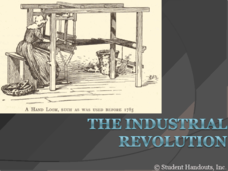
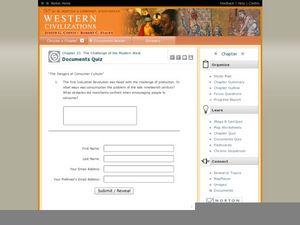







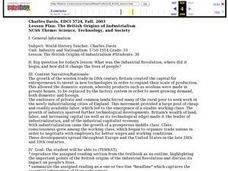

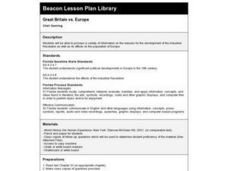

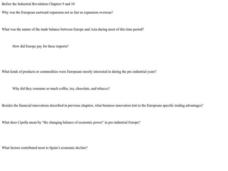








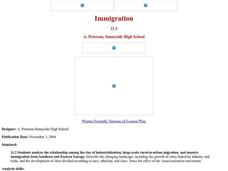
![La Belle Époque [1871-1914]: PPT La Belle Époque [1871-1914]: PPT](http://content.lessonplanet.com/resources/thumbnails/292406/large/cgrmlwnvbnzlcnqymdeymtewoc0zmdqxni1ncdjpenquanbn.jpg?1414487063)